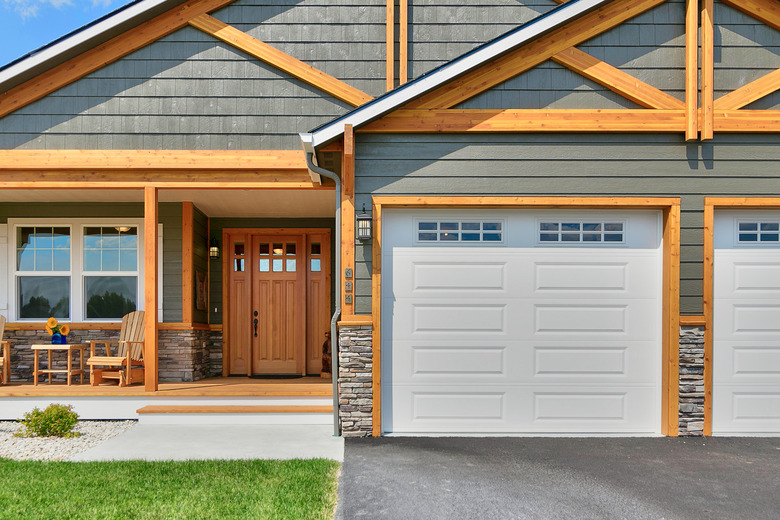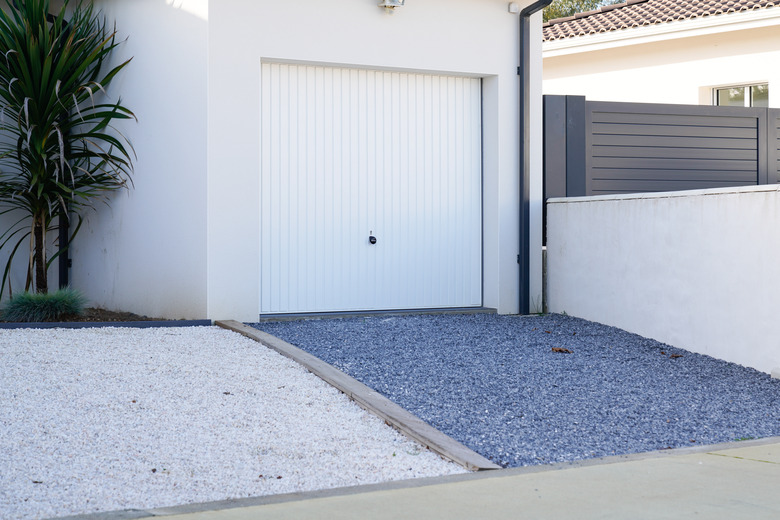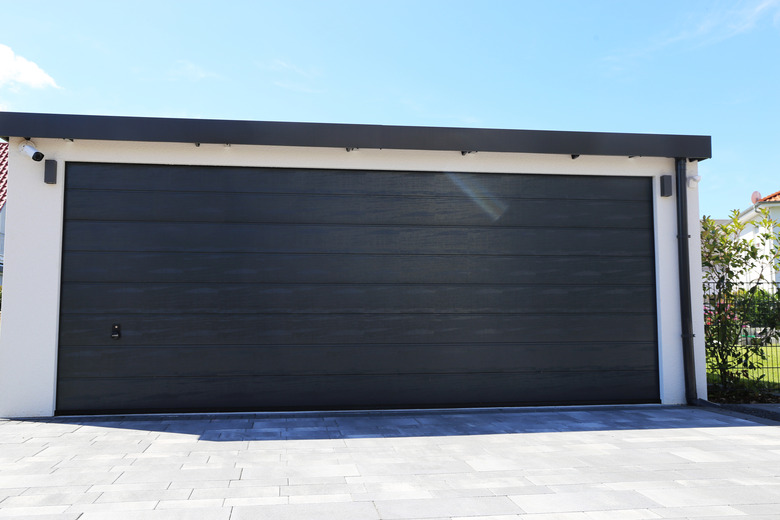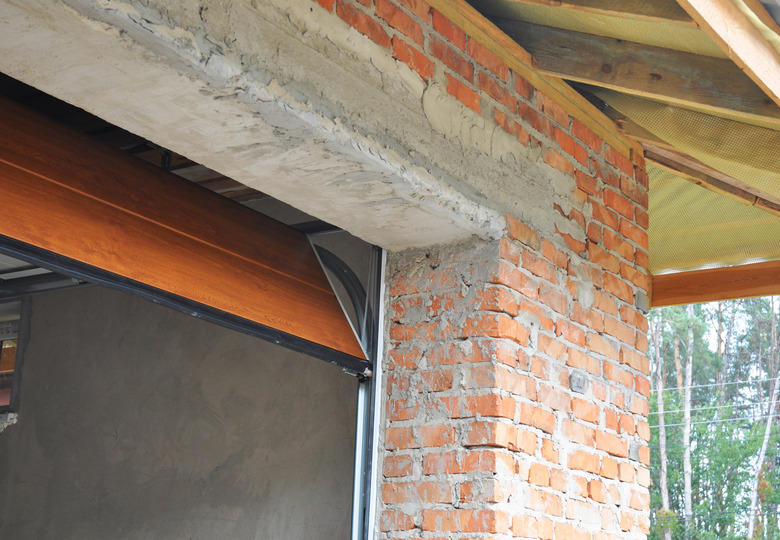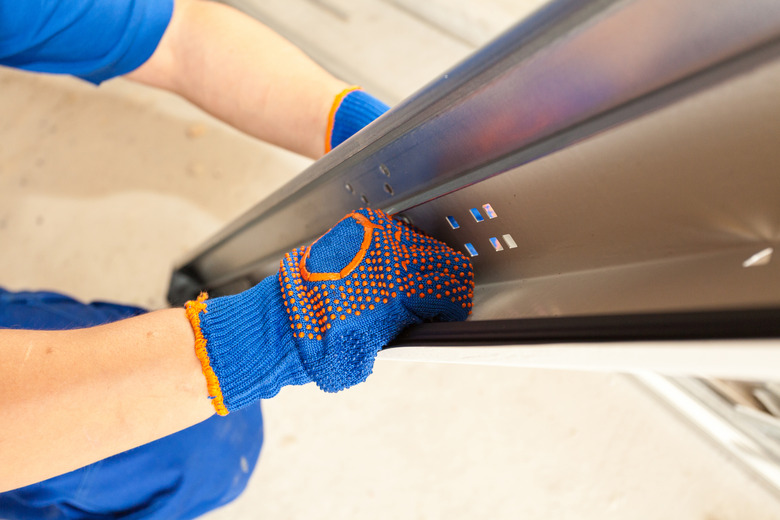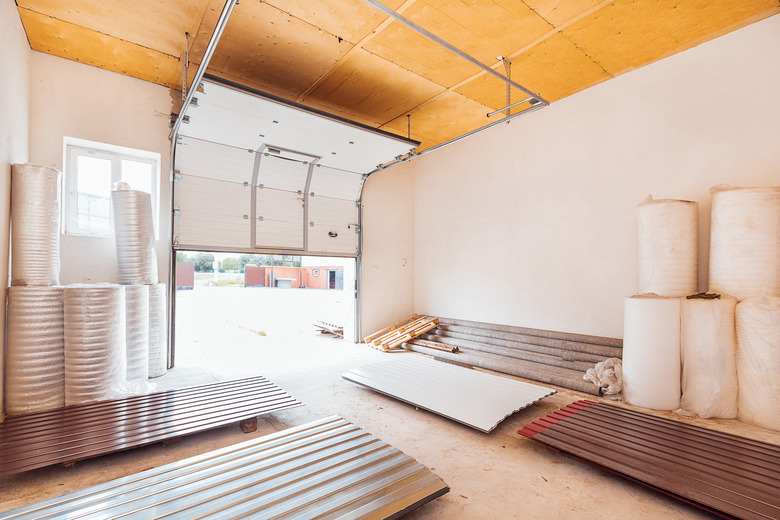How Much Does Garage Door Replacement Cost?
Garage doors have a major impact on a house's curb appeal — swapping yours out is a great way to give your home's facade a facelift. You may also decide to get a new garage door if yours is dingy, broken, or hasn't been maintained for some time. Whatever your reasoning, you should know the cost of a garage door replacement so that you're prepared when the bill comes.
When it comes to home improvements, garage door replacement is considered a midlevel project. It costs between $600 and $2,750 on average when done by a contractor or garage door dealer. That includes the cost of the new door, so if you choose a high-quality custom door, the bill could run up to $10,000.
If you're trying to up your home's resale value before you put it on the market, it's money well spent. With a new door, you can recoup 93.8 percent of the garage door replacement cost. That's a higher return on investment than most other home improvement projects, including glitzy upgrades, like new kitchens and master suite additions.
Garage Door Replacement Cost Basics
Garage Door Replacement Cost Basics
Garage door replacement costs depend on the material from which the door is made; added extras, such as windows, hardware, and the like; and the garage door style you choose. Garage doors can be made from steel, aluminum, faux wood, solid wood, wood composite, as well as vinyl, fiberglass, and a combination of glass panels in aluminum frames.
Uninsulated aluminum and steel doors are the least expensive, starting at about $600 installed for a stock door. The most expensive doors are vinyl, with prices ranging from $1,000 to $2,600. In general, the garage door replacement cost for the other materials falls between those price points. When shopping, you'll notice a lot of overlap in costs among different types of garage doors.
The majority of doors are sectional doors, where individual horizontal panels are connected to one another with hinges that travel on tracks, but many people like the look of carriage-style doors that swing outward. Carriage-style doors tend to be more expensive than other types of garage doors because of their traditional and distinctive styling. If you like the look, many manufacturers make doors that look like carriage doors but are really roll-ups. Other styles include tilt-up, which are one-piece doors; roll-up, where thin sections roll up on a spool-like device above the door; and sliding doors.
Garage Door Replacement Cost Factors
Garage Door Replacement Cost Factors
A one-car garage is typically 8 to 10 feet wide. National average costs for a single-car garage door range from $600 to $1,500. A two-car garage is usually 15 to 17 feet wide, with average costs starting at about $750 and reaching $4,000. Three-car garages usually require one of each type.
Garage Door Insulation
You can find both uninsulated and insulated doors on the market. Manufacturers use foam insulation sandwiched between steel or aluminum skins, adding a few hundred dollars to the door's total cost. You can expect R-values in the 15 to 20 range. If the garage is heated, insulated garage doors are a must for ensuring energy efficiency. Insulated and weatherstripped doors can also help moderate temperature swings for living spaces above the garage.
Stock vs. Semi-Custom vs. Custom Garage Doors
Garage doors come in stock, semi-custom, and custom configurations. Stock doors are ready to go as they are, which is a bonus for many homeowners, but they are usually limited in terms of available colors and panel designs.
Semi-custom doors make up the heart of the garage door market. In these cases, you pick a basic design and then add things like hardware, locks, tinted or non-tinted windows, insulation, and colors. Most manufacturers let you upload a photo of your home so that you can try out different door styles to determine the best look.
Custom garage door designs provide a unique door that is made from the highest-quality materials and finishes. These are the most expensive options, with some doors topping out at $10,000.
Other Garage Door Replacement Cost Factors
There are other items you may need to purchase with your door. If you are working with a garage door dealer, these items will be included in the estimate, which will lump together labor and materials.
- Locks. Many doors do not come with locking mechanisms for garage security. Door manufacturers make locks for their products. Prices range from $100 to $250.
- Low headroom kits. These products reduce headroom requirements for installation. They cost about $75 to $150.
- Garage door openers. Adding a garage door opener when you purchase a new door is almost becoming automatic. They make getting in and out of the garage easier, and they come with safety measures to prevent damage to your car or personal injury. A quality opener costs $225 to $500 installed.
Garage Door Installation Costs
Garage Door Installation Costs
You can buy a garage door through a specialized garage door company or through a general home improvement store. Door companies usually have their own crews who handle installation and repair. Home improvement stores that provide installation subcontract the work to a local garage door company. In either case, installation will add $200 to $500 to your bill. The cost is the same no matter what type of door you have installed.
Other garage door replacement cost items include disposing of the existing door, which costs about $50 to $100. If you need a new electric outlet for the garage door opener, it will cost about $500 to $800.
A new electrical circuit, especially one that involves buried cable, will probably require a building permit, but you may not need a permit to replace a garage door with one that is the same size and where you do not need to alter the framing of the garage. Some jurisdictions consider this minor work. To be on the safe side, a phone call to your local building department will give you the answer.
DIY vs. Professional Installation
DIY vs. Professional Installation
For some handy homeowners, the question for home improvements, like installing a new garage door, comes down to making it a DIY project or letting a pro handle the installation. There are a few things to consider. For one, a professional will take about three to seven hours to do the job. How would your skills match up to someone who has installed dozens of doors?
Garage doors can be heavy. If you have to remove an old wooden door, expect to handle up to 400 pounds when wrestling the door off its tracks. You will need a helper. Although newer doors are lighter, a helper will come in handy when it comes time to mount new panels to the tracks.
The biggest obstacle to homeowner installation has always been dealing with the garage door springs. Sectional garage doors have either extension springs, which are on the sides of the tracks, or torsion springs, which are located above the garage door opening. Torsion springs are especially dangerous to handle, and unwinding the old one or winding the new one incorrectly could result in serious injury.
However, installing new garage door springs has become easier than it used to be. In the past, winding the springs was done manually with long bars. Some manufacturers have redesigned these springs to make them more user friendly. Clopay and Wayne Dalton, two major garage door manufacturers, have systems that use power drills rather than winding bars to set the tension on the springs. You may have great confidence in your DIY skills, but when it comes to torsion springs, you should have a pro do this part of your garage door installation.
Garage Door Installation Steps
Garage Door Installation Steps
Roll-up doors are the most common type of garage door. They consist of individual horizontal panels that are connected to one another with hinges. Rollers that fit into a track system are installed at the edges of the panels.
The door will not only need to fill the garage door opening but there must be enough room around the door for it to operate. The manufacturer's literature will provide the requirements, but generally, you will need about 3 or 4 inches of free space on the sides of the tracks, about 1 foot above the door opening, and what is called backroom, which is the height of the door plus about 18 inches. That 18 inches ensures there is enough room to attach support brackets to the ceiling of the garage.
Most pros like to place the bottom panel (with the rollers in place) in the opening and then set the vertical tracks in place. They will loosely screw the tracks to the garage door jambs, leaving enough give to adjust the tracks later if necessary. The other panels will follow, connecting them to one another with hinges. The top horizontal track is attached to the vertical track, leveled, and secured with brackets to the ceiling.
Once the door is assembled, the springs are installed, and a cable connects the door with the springs. There are two different types of springs, and each has its own installation method. If a garage door opener is part of the project, the opener installation follows once the door is in place.
